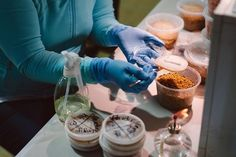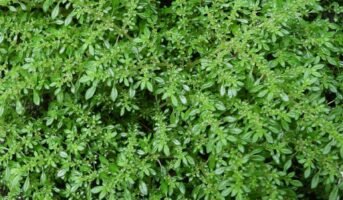Mushroom seed, or mycelium, of the chosen type of mushroom is initiated into the topsoil and enabled to disperse for a few days. It is the fruit (similar to an apple) of the mushroom “body” and contains mushroom “seeds” known as spores.
Mycelium is the mushroom’s body, and its individual components are microscopic. Since the mushroom’s body is typically dispersed over a large swath, it is rarely noticed. In nature, some mushroom species can have bodies that cover hundreds of square miles.
Mushroom seeds: Physical description
Spawn is a residing fungal culture known as mycelium that has risen onto a substrate. It is the foundation of any mushroom’s important methodology. Consider it the equivalent of mushroom farm seeds. On the other hand, mushroom spawn is raised from handpicked genetic factors and recreated for coherent production of a cultivar of mushrooms. This is comparable to how people mature apples from transplanted wood rather than planting apple seeds.

Source: Pinterest
Mushroom seeds: Types
‘Spawning’ refers to any substance with fungal isolates used to propagate mushrooms. However, spawn is typically found in either of the following forms:
Sawdust
Sawdust Spawn is sterilised sawdust vaccinated with mycelium, most commonly by grain spawn. Sawdust is typically made from a certain type of hardwood, with pieces that are neither too big nor too fine. Logs, open air mushroom beds, pasteurised straw, cardboard, and a wide range of other surfaces can all be inoculated with sawdust spawn. It is also used to vaccinate wooden dowels in order to produce plug spawn.
Grain Spawning
Grain spawn is sterilised grain which has been vaccinated with microbes or a sterile heritage of mycelium. Many different grains can be used, with rye as well as millet being two of the most prevalent. Other options include corn, wheat, and various cereal grains.
Plug/Dowel
Plug spawn is an accumulation of fertilised small wooden dowels with mycelium. This can be completed with sawdust spawn or indeed living mushroom stems.
Mushroom seeds: How do you store mushroom spawn?
- You can purchase mushroom spawn from various producers both offline and online. Look for reputable manufacturers to ensure the highest quality. When it comes to quality, spawn varies.
- Your purchase should include the date of immunisation. Keep this date in mind because it may deteriorate due to bacteria, mould, or waste products. Because it is a ‘use or lose’ product, its average lifespan is two months.
- Try to put it to use as shortly as you get it. Otherwise, you can store it in the refrigerator to extend its life. But keep in mind that time isn’t on the side, so use that spawn as quickly as possible.
- Meanwhile, purchasing is only for the infrequent mushroom farmer; for those who want to have one large mushroom farm or generate in bulk, purchasing may not be the best option.
- Making your own mushroom spawn is the best option. It’s not difficult; you just need more sterile methods.
When growing mushrooms, mushroom fertilisation should be an aseptic operation. Tidy your spawning techniques, hardware, bins, and other tools thoroughly with a water stream and antiseptics. Ensure that your clothing and shoes are free of allergens.
FAQs
Are there seeds in mushrooms?
Where can I find mushroom seeds?
Mushrooms, unlike other plants, are not grown from seeds. Rather, you can sprout them from spores (which are similar to microscopic seeds) or spawns. Increasing mushrooms with spawn is thought to be easier and faster.
Housing News Desk is the news desk of leading online real estate portal, Housing.com. Housing News Desk focuses on a variety of topics such as real estate laws, taxes, current news, property trends, home loans, rentals, décor, green homes, home improvement, etc. The main objective of the news desk, is to cover the real estate sector from the perspective of providing information that is useful to the end-user.
Facebook: https://www.facebook.com/housing.com/
Twitter: https://twitter.com/Housing
Email: [email protected]












